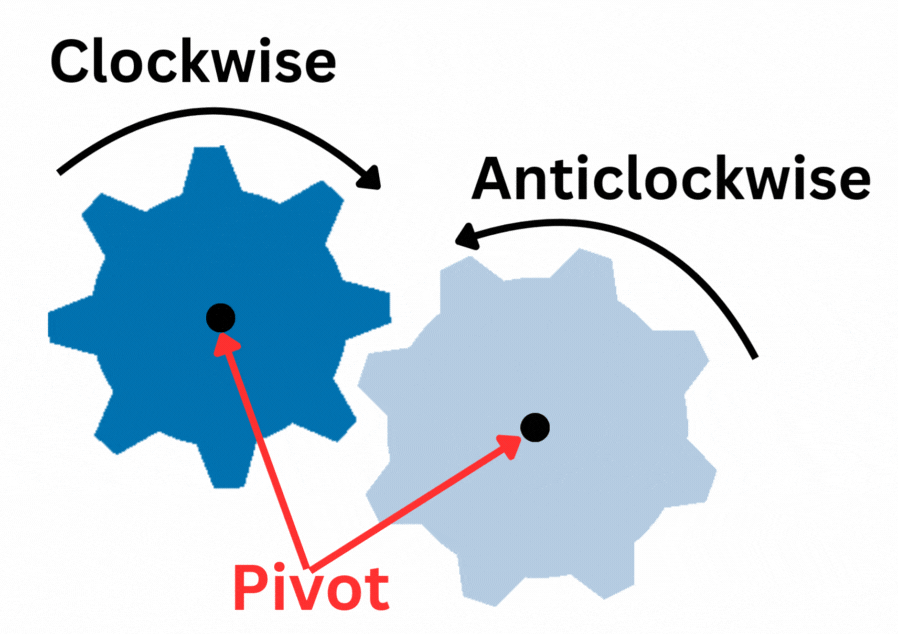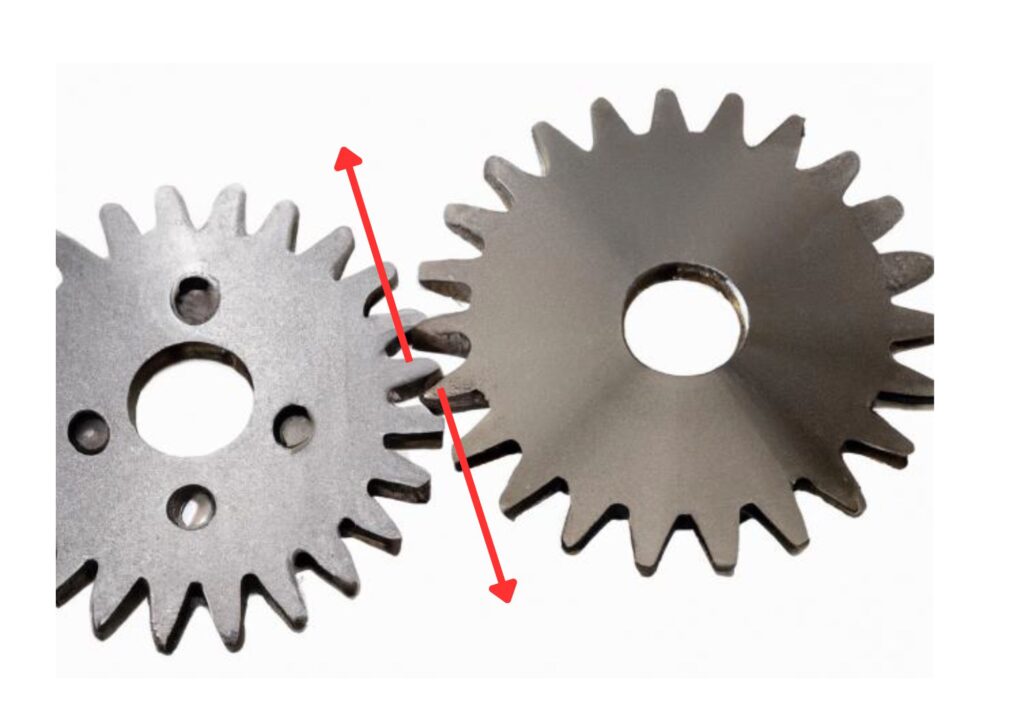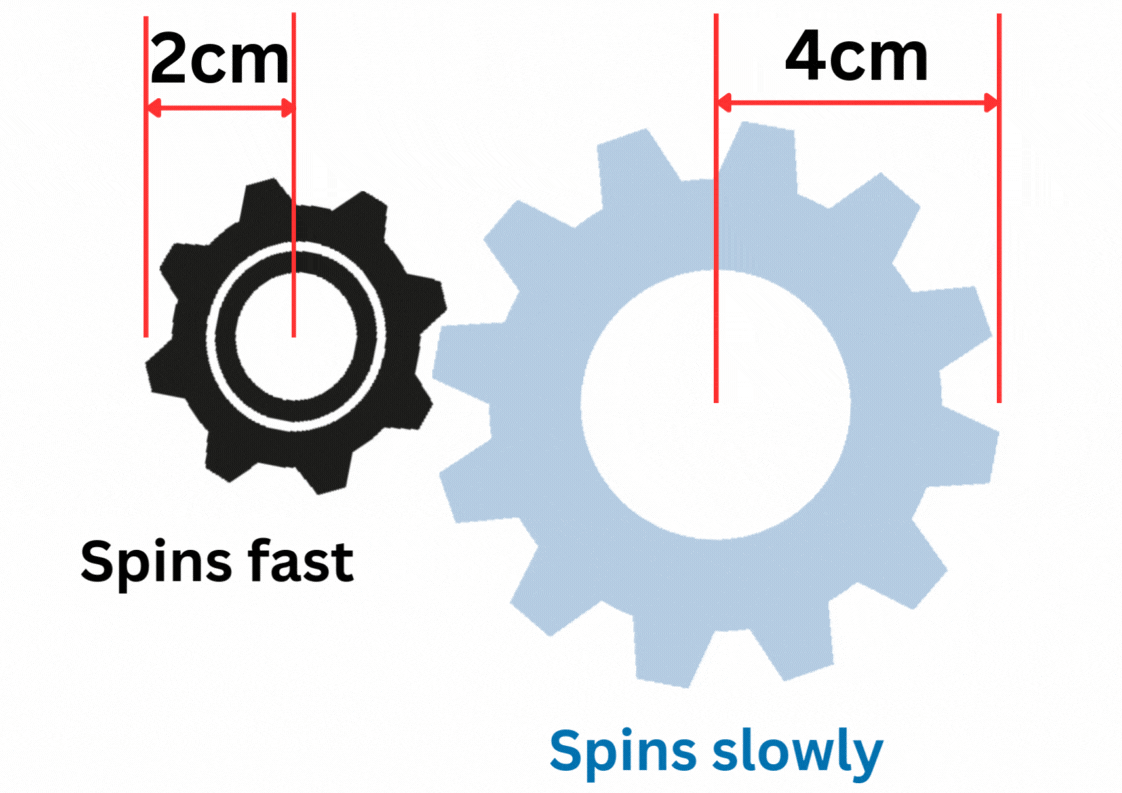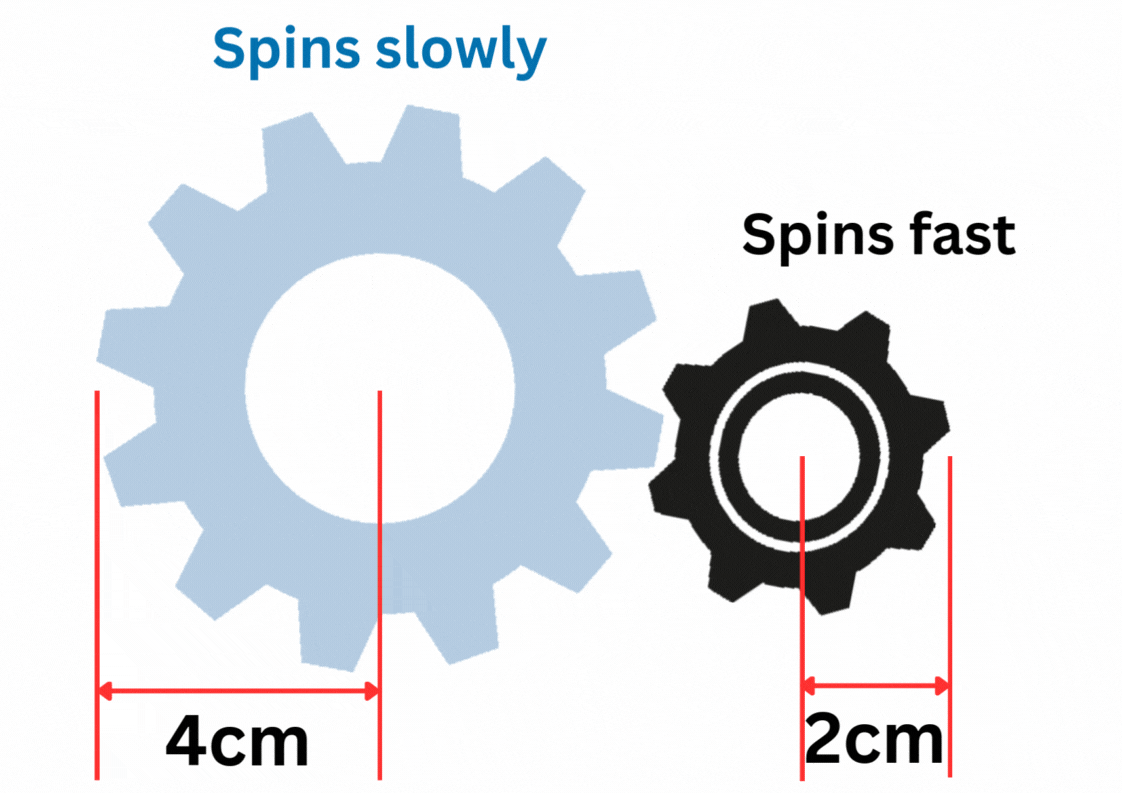AQA GCSE Gears(Physics)
Gears
A gear is used to change the moment of a turning effect. So, they can multiply the turning effect to increase or decrease it.

In the above diagram of the two cogs the centre of each cog is the pivot. One cog turns clockwise, whist the other turns anticlockwise.
Forces acting where the cogs of the gear wheels meet.
Where the teeth of the gear cogs meet the gear cogs will exert equal and opposite forces on each other, where the surfaces are in contact as shown below

Force arrow equal in size, opposite in direction. These should be along a tangent to the cog, this means that they are at a 90 degree angle to the line that would go to the centre of the cog.
Small Cog turning a Large Cog
In the diagram below, the small cog is half the size of the large cog. This means that the small cog will rotate twice as fast as the large cog.

If the small cog is connected to the engine of a car, and the large cog is connected to a wheel, then this cog arrangment would represent a low gear selection for a car. This means that the large cog would have a high turning effect, but rotating at a low speed. This would be used when travelling up a steep hill.
Large Cog turning a Small Cog
In the diagram below the large cog is twice the size of the small cog, so the large cog rotates at half the speed to the small cog.

If the large cog is connected to the engine of a car, and the small cog is connected to a wheel, then this cog arrangment would represent a high gear selection for a car. This means that the small cog would have a low turning effect, but rotating at a high speed. This would be used when travelling along at a reasonable speed.
Practice questions
1.What are gears used for?
2. The teeth of one gear cog will exert a 10N downward force on a 2nd gear cog. State the size and direction of the force that the 2nd gear cog will exert on the first gear cog
3. A small gear cog has a radius of 5cm and a 2nd gear cog has a radius of 20cm. If the smaller gear cog rotates 50 times per minute, calculate the number of rotations per minute that the large cog completes.
Absorption and Emission of EM Radiation
JJ Thomson and Plum pudding model
Ernest Rutherford and the Nuclear Model
Niels Bohr changing the Nuclear Model
Discovering the Proton and Neutron
Measuring radiation from radioactivity
Radiation types and properties
Random nature of radioactive decay
Radioactive contamination or irradiation
Hazards of contamination and irradiation
Studies on the effects of radiation on humans
Different half lives of radioactive isotopes
Nuclear Fission Chain Reaction
Writing nuclear fission equations
Drawing ray diagrams for a concave lens
Drawing Ray Diagram to produce a virtual image for a convex lens
Drawing ray diagram to produce a real image for a convex lens.
Specular and Diffuse Reflection
Seeing Coloured Objects Part 2
Viewing objects through coloured filters
Transparent, Translucent and Opaque
Accordion Content